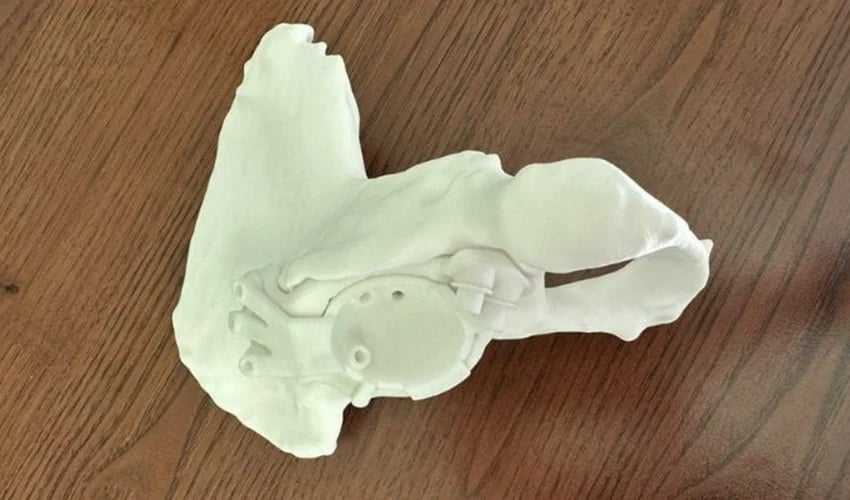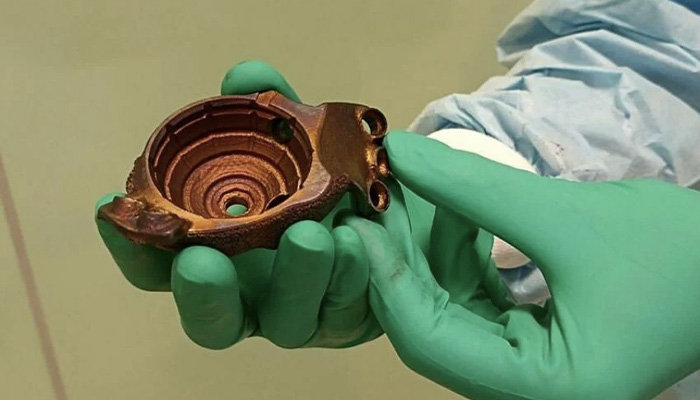A 3D Printed Hip Prosthesis Has Been Successfully Implanted in Poland

Additive manufacturing is increasingly known for its many benefits in medicine. Time and again, it has made it possible to produce perfectly fitted parts for every person, a necessity especially when it comes to parts like prostheses. Now, this has been demonstrated once again at a hospital in Lublin, a city in Poland, where 3D printing was successfully used for the first time to make a hip prosthesis.
After a patient experienced complications with her previously inserted steel prosthesis, the medical team needed to find a quick solution. “As a result of the loosening of the earlier placed prosthesis of the hip joint, in this particular female patient, there came to be a large defect in the pelvic bones,” explained Dr. Andrzej Atras, head of the hospital’s traumatology-orthopedics department. According to Dr. Atras, such an operation is very difficult to handle. There must be an exact distribution of forces in the bone socket so as not to cause degeneration of the bone tissue in the future, but rather to promote reconstruction and regeneration of the bone bed. “We had to use a specially expanded implant which would allow for stable embedding in the bone with the use of the remaining regions which contained good quality fragments of bone,” he continued. A 3D printed hip prosthesis was the solution.

The original steel prosthesis loosened over time (photo credits: Dziennik Wschodni)
3D Printing the Hip Prosthesis
With the help of the orthopedic company Medgal, the team developed a 3D printed implant for the hip joint that was perfectly adapted to the patient’s needs. First, an X-ray and high-resolution computerized tomography were taken, after which the 3D model of the pelvis and hip joint could be created. This allowed doctors to assess the defects and damage in the patient’s pelvic floor and, with the help of a team of engineers and an orthopedic surgeon, make the implant. This was eventually fitted to the remaining acetabulum, allowing the acetabular component of the prosthesis to be placed firmly in the pelvic bone. In an interview, Dr. Atras noted, “We worked on that socket for two months, to give it the correct geometry and biocompatibility with the patient’s body. It often required several hour long consultations and an evaluation of many variants of the construction in order to select the most optimal one.”
The socket was coated with an open-pored coating of titanium, carbon and silicone. This comes closest to the patient’s natural bone and resembles the bone structure; in addition, the coating provides an antibacterial effect. This is to guarantee that the bone can actually grow into the structure of the implant and that the patient can become fit again as quickly as possible. Though the exact technology used was not mentioned, there are a few that could have been turned to, including FDM and photopolymerization. In any case, after this successful operation, the team of doctors in Lublin is certain – there will be more operations with 3D-printed prostheses in the future.
What do you think of this 3D printed hip prosthesis? Let us know in a comment below or on our LinkedIn, Facebook, and Twitter pages! Don’t forget to sign up for our free weekly Newsletter here, the latest 3D printing news straight to your inbox! You can also find all our videos on our YouTube channel.
*Cover Photo credits: Dziennik Wschodni Zeitung






